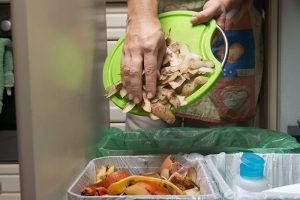 The Massachusetts Institute of Technology found that 40 percent of municipalities included in a research set have programs aimed at diversion of food material. And those cities are not all in regions considered hotbeds of environmentalism.
The Massachusetts Institute of Technology found that 40 percent of municipalities included in a research set have programs aimed at diversion of food material. And those cities are not all in regions considered hotbeds of environmentalism.
The findings come from a study titled “Patterns in municipal food scrap programming in mid-sized U.S. cities” that is being published this fall.
The research project examined 115 cities across the country, and determined that 46 of them have some sort of food scrap recycling program in place. That doesn’t mean each of those communities collects food materials, as the study defined a “program” as including educational programs and support for home composting in addition to drop-off facilities and curbside collection of food waste.
Curbside collection of food scraps was present in 18 percent of the surveyed cities.
Nonetheless, the finding that 40 percent of studied cities were looking to increase food scrap diversion helps to quantify the growing interest in capturing that segment of the waste stream.
The study also yielded some surprising results about the characteristics of communities active in this area.
Often, food scrap diversion programs are considered a luxury a community can implement only after it has developed strong programs targeting other materials.
But researchers noted that even communities without strong traditional recycling programs were found in many cases to have food scrap collection efforts in place. In the southern U.S., more than 35 percent of the cities surveyed had an active food scrap program.
“The places deploying food-scrap recycling programs are located throughout the country, not just in well-off coastal areas with popular environmental movements,” an MIT news report summarized.
Along similar lines, the study found that socioeconomic factors, including income level, had a “negligible correlation with a place’s tendency to adopt food-scrap recycling.”
So which factors are associated with communities that have launched food scrap programs? For one, many also utilize pay-as-you-throw systems, according to the study. These programs naturally encourage residents to think more about their disposal habits, making them a good precursor to targeting new materials for diversion.
Greater population density was also found to correlate with higher frequency of curbside food scrap collection, though population density did not prove to be a reliable indicator of the likelihood of other food scrap initiatives.
More stories about organics
- California extends compostable labeling law
- CA compostable labeling deadline worries producers
- Organics collection programs take care, creativity



